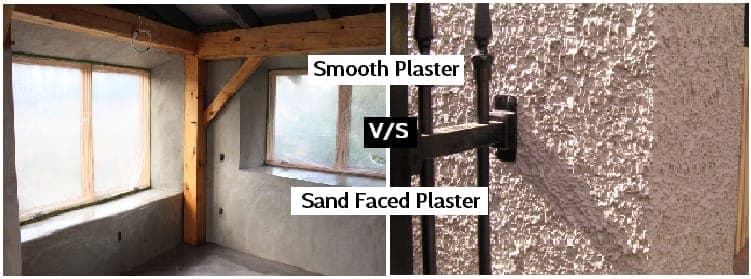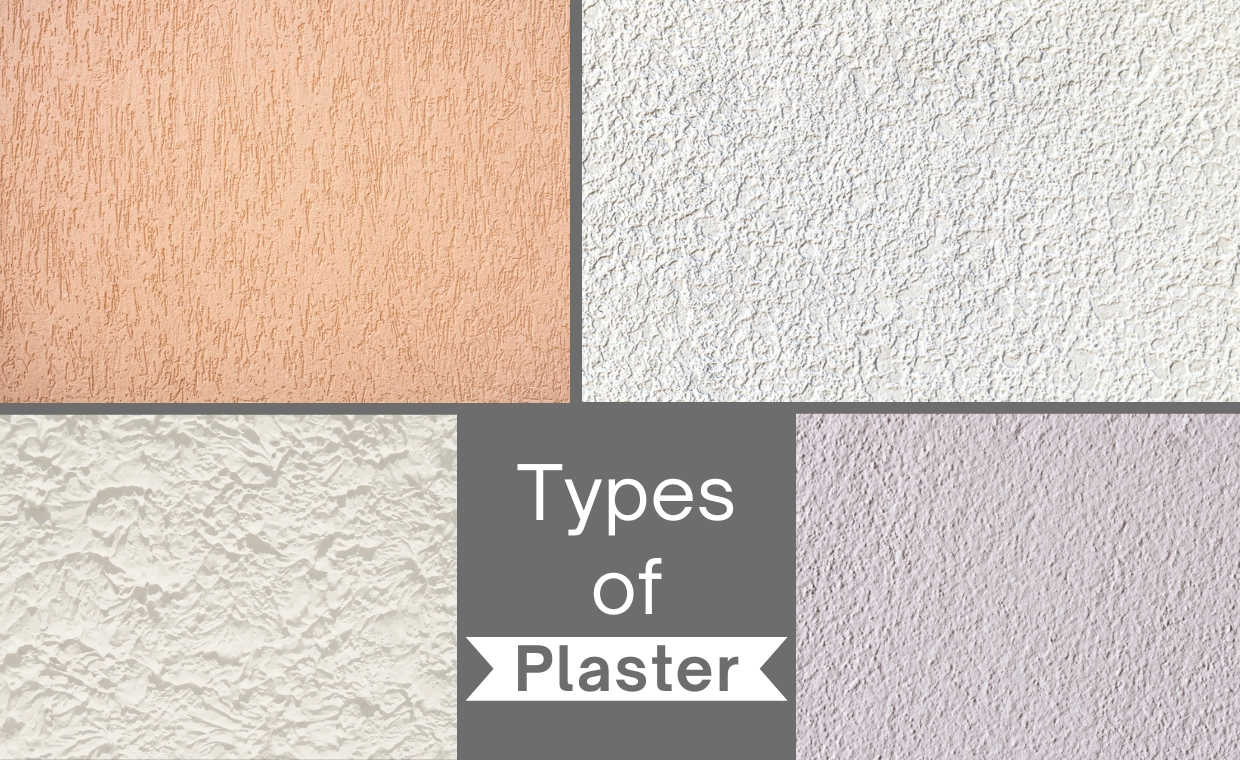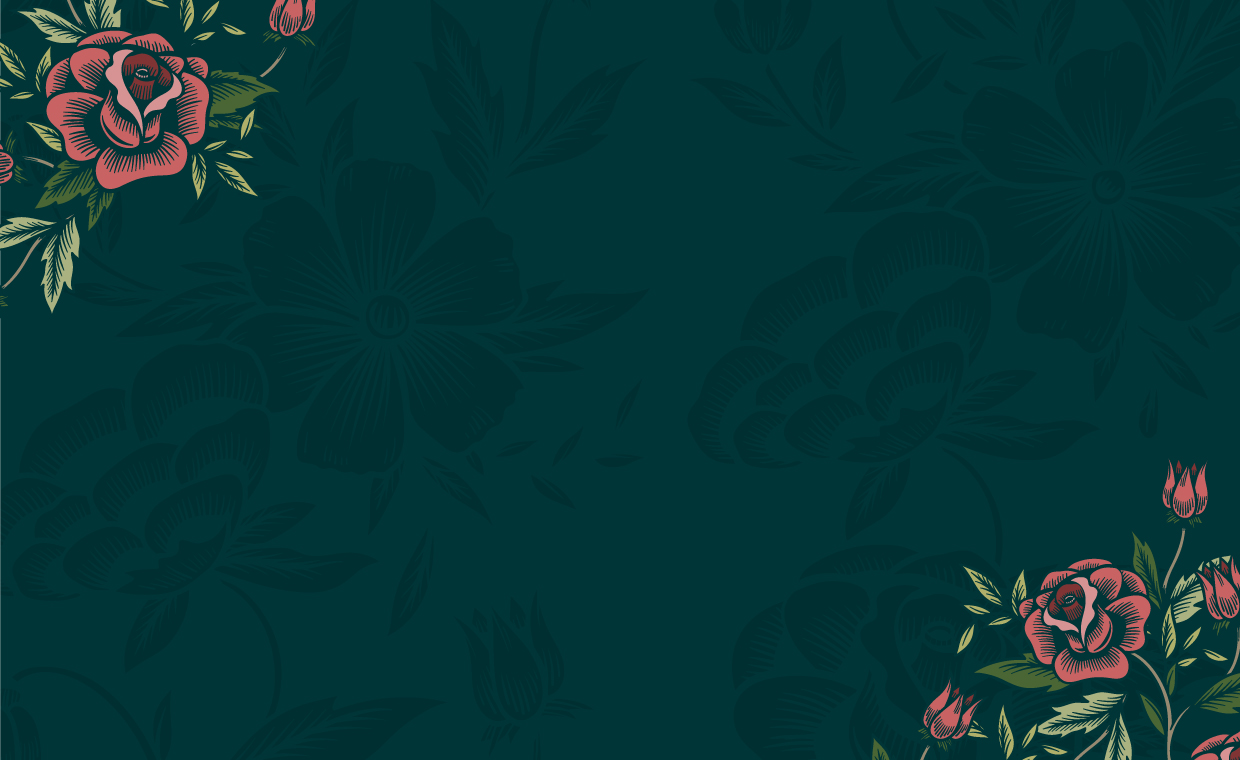
What is Plaster?
Plaster is the most important and oldest building material used in various types of building and residential construction projects.
The primary function of plastering is to protect and preserve the materials used for building components. But in addition, they may provide decorative effects or may be required to be treated further.
Plastering is a process of applying mortar in one or more coats on concrete, brickwork, stone masonry surface or lathing. It must be durable as it prevents the moisture penetration and should be able to weather uniformly.
It should also be pleasing in appearance. These properties depend upon the material used, a composition of the mix, and a level of degree of mechanical bond between the plaster and the backing surface and workmanship.
Lack of bond with the backing, cracking, crazing of surface and discoloration (stain) are major defects in plastering.
There are various aspects on the basis of which plaster is classified such as ingredients, Finishes, Coat, Popularity and proportion.
Smooth plaster, sand faced plaster, textured plaster is some of the plasters classified on the basis of finishes.
The interior walls which are of exposed brick wall concrete structure are all leveled with a thick covering of cement-sand or gypsum. This activity is called internal plastering. If the same activity is done on the exterior then it is called exterior plastering. The ways of doing plastering on the internal and external surface are quite different and not the same.

Brief Comparison of Smooth Plaster V/S Sand Faced Plaster:
01. Composition
- Smooth finish plaster is similar to sand faced finish except that fine-grained sand is used instead of coarse-grained sand and no sponging is done to expose the sand grains. In smooth plaster neat cement/ Neeru slurry is used which increases the chances of shrinkage more.
- Sand faced plaster is a layer of cement-sand mortar applied over brickwork and served as a wet-proof coat on masonry. To get the effect of a sand faced finish, a sponge is used in the second coat when it is still wet to expose sand grains.
Also Read: All about Brick Masonry Construction and It’s Precaution
02. Area Recommendation
- Normally smooth plaster is done on internal walls and ceilings.
Also Read: Basic Guide for the Preparation of Internal Plaster
- Sand faced plaster is used on external surfaces.
Also Read: Basic Guide for the Preparation of External Plaster
03. Thickness
- The thickness of smooth plaster is usually 6 to 12 mm. But if brickwork is not good and not in line & level, it may go up to 20 mm & even more.
- The thickness of sand faced plaster is 20 mm where first coat is 12 mm and the second coat is 8mm.
04. Flexural – Tensile Strength
- In smooth plaster, neat cement slurry is used on the surface, which is weak in tension and flexural strength and hence prone to cracking.
- In Sand faced plaster neat cement slurry is not used on the surface which exhibit better tensile strength and flexural strength compared to smooth-faced plaster, so they are less prone to cracking
05. Non-Toxic and Anti-Fungus
- In smooth finish plaster, the surface of plaster is smooth, so chances of humidity are less on the surface for that reason chance of fungus development on the surface are less as compared to sand faced plaster.
- In sand faced plaster, the surface of plaster is rough, so it is more likely to remain moist on the surface so that the possibility of fungus development on the surface is more as compared to smooth plaster.
06. Curing
- Curing shall be begun after 24 hours of plaster finish. In Smooth faced plaster chances of shrinkage is more as it requires more water curing as compared to sand faced plaster.
- Curing shall be also begin after 24 hours of plaster finish. As compared to smooth plaster, a thickness of sand faced plaster is more so chances of shrinkage is less which need less water curing.
Also Read: Different Methods of Curing Concrete: Know Before Curing
07. Fire Resistance
- Up to 600 oC to 650oC /1200 oF Smooth finish plaster acts as refractory material and resists fire but later it becomes brittle and cracks and falls and looses bond with a wall. However the surface thickness of smooth plaster is less, so fire resist of this plaster is less as compared to sand faced plaster.
- The surface thickness of sand faced plaster is more, so fire resistance of this plaster is more as compared to smooth plaster. Other properties remain same
Also Read: 12 Tips to Prevent Fire at Our Home
08. Acoustic Properties
- In smooth plaster finish, thickness of plaster is less, so less sound insulation as compared to sand faced plaster.
- In sand faced plaster, due to more thickness of plaster surface, more sound insulation as comparative to smooth plaster finish.
09. Paint Bonding
- In this type of plaster, the surface of plaster is very smooth. Because of this reason bonding between the plaster and paint is less as compared to sand faced plaster.
- In sand faced plaster, the surface of plaster is rough. Due to this surface bonding between the plaster and paint is more as compared to smooth plaster
Also Read: Is My Plastered Wall Ready to Receive Paint?
10. Rust Inhibitor
- Compared to sand face plaster, there are more chances of cracking in smooth cast plaster, and it needs more rust inhibitors.
- Compare to smooth plaster, there are less chances of cracking in sand faced plaster, and it needs less inhibitors.
11. Aesthetic Finish
- In smooth plaster, thick cement slurry is applied on the surface to achieve the smooth surface. When carvings are carved in the fresh plaster, smooth finish plaster provides a good aesthetic look. But if there are no carvings, it looks plain & simple
- In sand faced plaster, sponge or machine is used to make the surface rough. The surface is evenly rough which provides a good aesthetic look to the house
12. An Absence of Shrinkage Cracking
- Development of shrinkage cracks is more frequent in smooth plaster as compared to sand faced plaster
- Development of shrinkage crack is less frequent in sand faced plaster as compared to smooth cast plaster
Also Read: Why Crack Occurs During Initial Shrinkage?
13. Mode of Applications
- Smooth plaster is easily workable. It gives a smooth finish in compatible to sand faced plaster
- Sand faced plaster is quite difficult to work upon. It gives a rough finish as compared to smooth plaster. Sand faced plaster need more skilled persons to work.
14. Finishing Time
- In smooth plaster, neat cement slurry is applied as soon as the finishing, if the surface of plaster is completely leveled. So, smooth plaster need less time as compared to sand faced plaster.
- Sand faced plaster is done in two coats. The minimum interval required to complete the two successive coats of plaster is 24 hours of plaster. Hence sand faced plaster needs more time as compared to smooth plaster.
15. Wastage
- Percentage of wastage is less during application in smooth plaster because the surface is done in only one coat which is 6-12mm thick as compared to sand faced plaster. For 10 sqm area, cement consumption of 12 mm thick plaster is 1.8 bags in 1:2 proportion, 1.2 bags in 1:4 proportion, and 0.9 bags in 1:6 proportion.
- Percentage of wastage is more during application in sand faced plaster because this type of plaster is done in two coats which are 12mm and 8 mm thick as compared to smooth plaster. For 10 sqm area, cement consumption of 20 mm thick plaster is 2 bags, in which the first coat of 12 mm thick is applied in 1:5 proportion and second coat of 8 mm thick is applied in 1:3 proportion.
16. Cost
- Smooth plaster is done in one coat as internal plaster. So, less material is used and wastage of materials is also less in this plaster. Per square feet cost of this plaster is also less. Hence total cost of smooth plaster is also less than sand faced plaster.
- Sand faced plaster is done in two coats on an external surface. So, wastage of materials is also more. Per square feet cost of sand faced plaster is more. Hence total cost of sand faced plaster is more as compared to smooth plaster.
17. Surface
- Here the surface of plaster is very smooth. Therefore on internal surface mostly smooth plaster is used. This is also good for paint.
- The surface of this plaster is rough. Therefore this plaster is never used on internal surface because it gives injuries to children. Generally, this plaster is used on external surface.
18. Waterproof
- Smooth plaster finish is done in single coat and surface of this plaster is also smooth. So, effect of water on this plaster is less. Therefore smooth plaster needs more water proofing than sand faced plaster.
- Sand faced plaster is done in two coats and surface of this plaster is rough. So effect of water on this plaster is more. Therefore sand faced plaster need less water proofing than smooth plaster.
19. Imperfection & Undulation
- In smooth plaster, surface of plaster is very smooth. So, Imperfection and undulation on plaster are easily visible in smooth plaster as compared to sand faced plaster.
- In sand faced plaster, a surface of plaster is rough. So, imperfection and undulation on plaster are not easily visible as compared to smooth plaster.
20. Strength
- Smooth finish plaster is similar to sand faced finish except that fine-grained sand is used instead of coarse-grained sand and no sponging is done to expose the sand grains. In smooth plaster neat cement/ Neeru slurry is used which increases the chances of shrinkage more.
- In sand faced plaster there is no use of neeru cement slurry.
21. Environmental Effect
- As done on internal surfaces, effects of environment moisture, heat, humidity, rain are less, So only one coat applied.
- As it is exposed to outdoor environment to moisture, heat, humidity, rain. It easily affected. So more than two coats are applied.
22. Admixture
- In this plaster waterproof admixture, Recon fiber etc can be added.
- Waterproof admixture, Recon fiber etc can also be added in this plaster.
Above are the various comparisons between smooth finished plaster v/s sand faced plaster. Along with the various properties of plaster serving above functions as decor, keep the above points before selecting any type of plaster.
Also Read:
Ready Mix Mortar for Brickwork, Plaster and Repair Maintenance!
What are the Pros and Cons of Masonry in Construction?
Portland Slag Cement: All You Like to Know!
Image Courtesy: image 1(a)
































